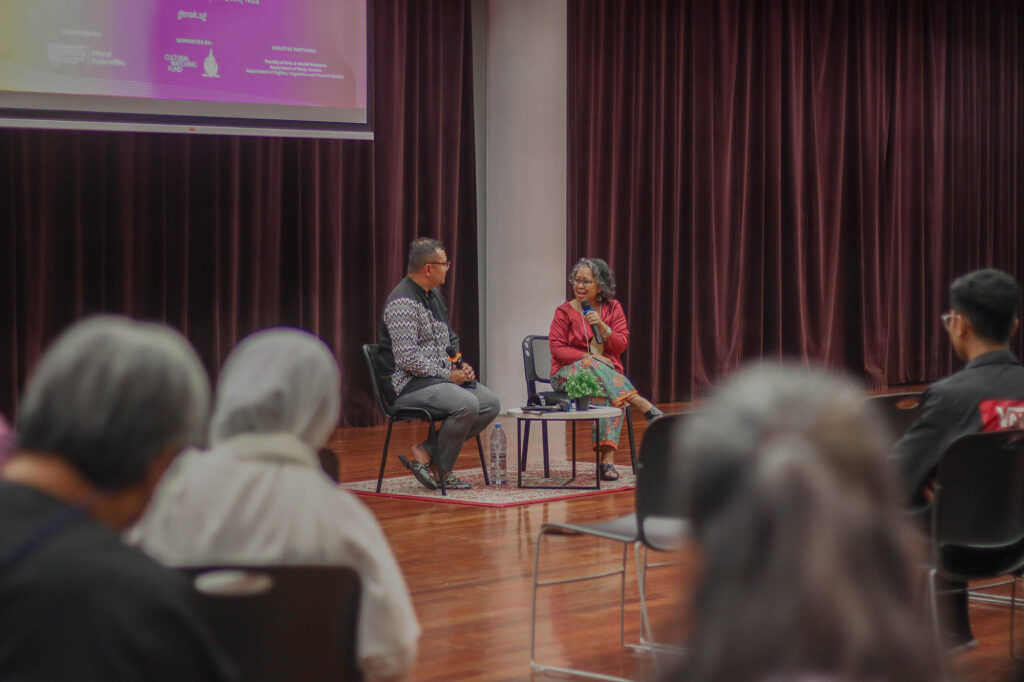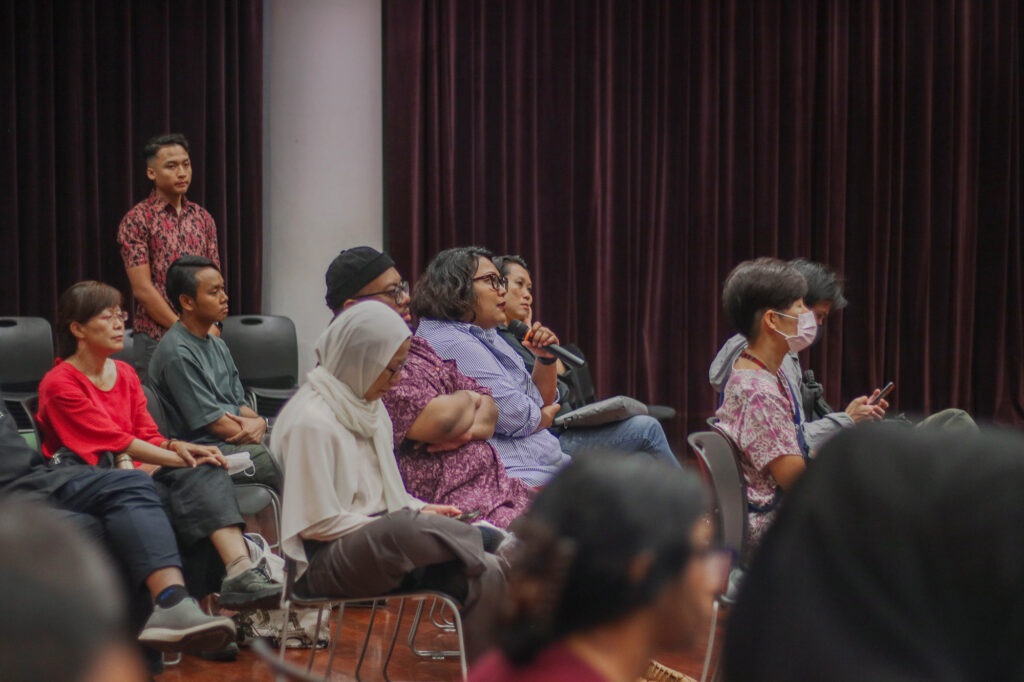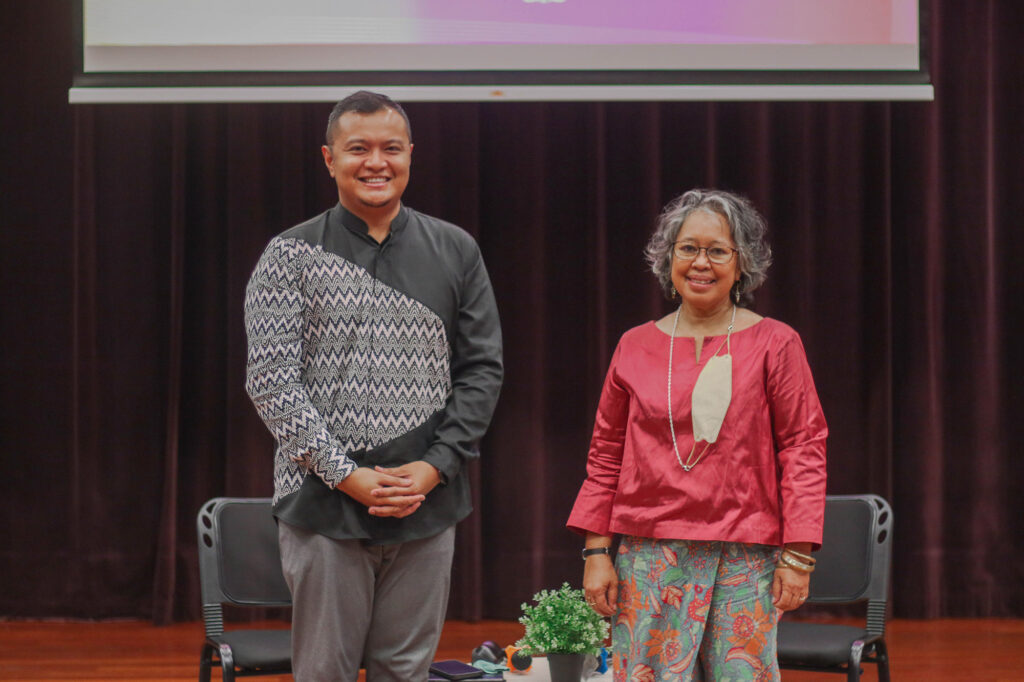Not Just a Hobby – How Malay Dance Evolved Over The Years
By Rossy Sri Julyana Bte Jumahat (2023)
Placing Malay dance within the context of social, economic and political developments in Singaporean society, and what it means for Malay dance practitioners.
As my graduation approaches, I made the decision to join Ilsa Tari – a Malay dance group in NUS – in my final year to explore something new during my undergraduate studies. Similar to other student dancers (I believe), I joined the dance group as a recreational hobby to cope with the academic rigour. Given that I dived into Malay dance initially with the mind of a hobbyist, Dr Noramin Farid’s session widened my perspectives on Malay dance beyond the school context.
Dr Noramin has succinctly explained the development of Malay dance over the last 60 years using five broad overlapping strokes: adaptation, nationalism, internationalisation, professionalisation, and diversification. Acknowledging the rapid evolution of the Malay dance industry, it may be challenging to capture all the nuances in a single session. Even so, understanding these broad strokes opens new doors to perceive our dance practices in the industry today.

Adaptation in Malay Dance (before 1950s)
Inherent in its techniques, Malay dance has acknowledged its pre-Islamic roots way before its formal genesis. The Parsi community of Bombay introduced Bangsawan to the region in the late 19th century, in which the Bangsawan adapted the Nusantara’s traditional dances to narrate stories from the Parsi theatre. During a period whereby the television was an inaccessible medium for entertainment consumption, patrons would visit the urban entertainment parks (New World, Gay World, and Great World) where cultures were actively shared through live performances.
With the sonic encounters that promoted the vibrant atmosphere, the entertainment world was highly controlled by the colonials who viewed these encounters as ‘noise’. Noise was regulated by restricting cultural troupes from performing at specific periods. Even so, Malay Dance has adapted to the regulation by showcasing whatever they can during their precious time slots.
Next Wave Of Change As Singapore Approached Independence (1950–60s)
As nationalist sentiments grew, so were discussions on the identity of Singapore Malay dance. The Malay dance industry has evolved systematically with the establishment of Malay arts organisations such as Sriwana (1955) and Perkumpulan Seni (1956) to promote Malay dance actively. During this period, Sriwana also hosted choreographers from Indonesia such as Mdm Liu Chun Wai who contributed to the foundations of Singapore Malay dance practice today.
Part of the nation-building efforts included Malay dance being co-opted into multicultural programmes, whereby national troupes functioned according to their compartmentalised identities of Singapore’s Chinese, Malay, Indian, and Others. The Aneka Ragam Ra’ayat (People’s Cultural Concerts; 1959-1964), which the State supported, featured the Malay dance that is deemed representative of the Singapore Malay identity.

Promoting Singapore Culture Abroad Through Festivalisation (1970–80s)
The formation of the National Dance Company (NDC) in 1970 propelled Singapore forward in promoting the Singapore identity beyond its shores. Dancers from NDC performed at the Adelaide Arts Festival in 1972, a significant invitational event to introduce Singapore culture overseas. Representation became crucial at this point, and competitions were held to decide which dance groups to feature at an international arts festival.
Several Malay dancers from groups such as Perkumpulan Seni and Sriwana were selected to represent Singapore in Australia. Mdm Som Said, a respected figure in the Malay dance industry, was one of the dancers from Sriwana who represented NDC in the Festival. She, along with other dancers, had to decide the repertoires that best represented Malay dance (and intrinsically the Singapore Malay identity) which have now become the five foundational forms of Singapore Malay dance.
Other than representing their own racial culture, dancers from NDC learnt various repertoires within Singapore’s diverse cultures as a way to unify the Singaporean identity. With the increasing frequency of international festivals following the Adelaide Arts Festival, Singapore Malay dancers brought along this unifying identity as they engaged in dialogues with practitioners in the region to showcase Singapore’s Malay dance identity.
Read more about the veterans sharing about their experience being a part of the National Dance Company.
Professionalising The Craft (1990s)
The rapid economic growth in the nation has given rise to the need for certifications, and the Malay dance industry was not excluded from it. Various establishments were formed to regulate the numerous dance groups – namely the Registry of Societies (ROS), the Accounting and Corporate Regulatory Authority (ACRA), and the myriad community groups in Singapore. Such establishments influenced how Malay dance was practised by the members; dancers under ACRA approached their practice more with a business lens, while those in community groups saw Malay dance as a leisure activity.
Diversification In The Scene (2000s onwards)
The rise of independent artists – self-employed persons and collectives – enabled the diversification in the Malay dance industry as dancers researched topics they were passionate about to incorporate into their dance practices. More dancers also held academic knowledge in arts management, dance, and theatre (among other societal issues) to inform their narratives.
Neoliberal acclimatisation – or the privatisation of the market – has pushed more competition for dancers to be unique in the scene. At the same time, the varied understandings of what “Malay identities” are in this era have prompted dancers to self-censor their productions, especially in this current art scene whereby people are policing the dancers’ values and expressions. While this is coming from a place to show the best of culture in Singapore, such policing can influence the dancers’ sustainability in their practices as their dance productions are reliant on their audiences who may not necessarily agree with the dancers’ values and expressions.
Dr Noramin emphasised again that these broad strokes are not meant to be seen as discrete stages. He sees the Malay dance industry as a constant work in progress, making multigenerational conversations within the community essential so that Malay dance can stay true to its identity while remaining relevant in this ever-changing landscape. In other words, these multigenerational efforts are meant to acknowledge the practitioners’ varying styles and approaches and how they can still move towards the same direction.

Final Thoughts
At the end of the session, I sensed a little shift within me in how I see Malay dance with regard to my practice as a student dancer. While I still acknowledge that Malay dance can still be a fun recreational activity, as a female Malay Muslim individual, I cannot simply ignore the influences of my positionality towards Malay dance. Already we had several practitioners who came for our GERAK Pre-Symposium previously discussing what it means to be a Singapore Malay dancer and what constitutes Singapore Malay dance. For these people who have way more years of experience than mine, they are still actively questioning issues pertaining to identity. While I still ask myself whether I identify as a Malay dancer, understanding the evolution of Malay dance in Singapore can guide me in understanding myself and my values that are often times shared with the community.

Next Article:
Geraklah! – How Malay Dance Veterans Arrive To Where They Are At Today